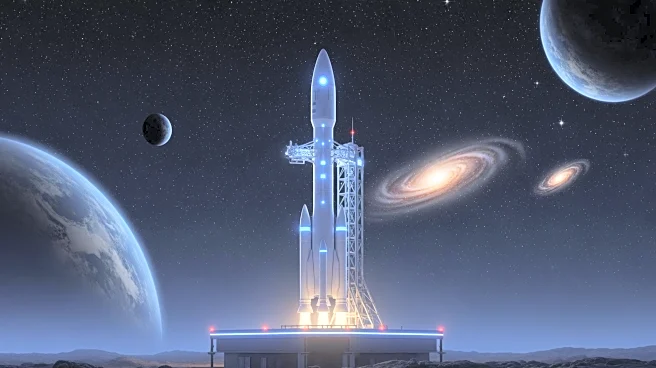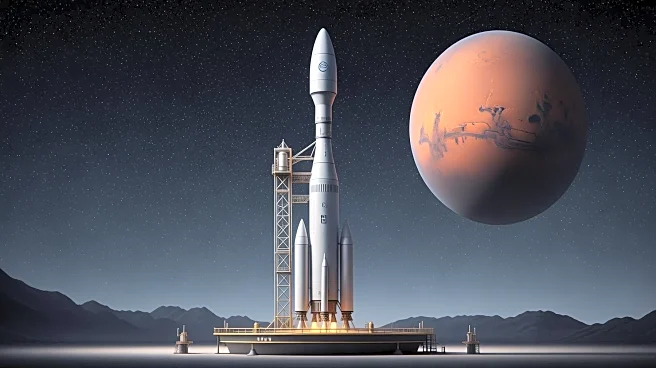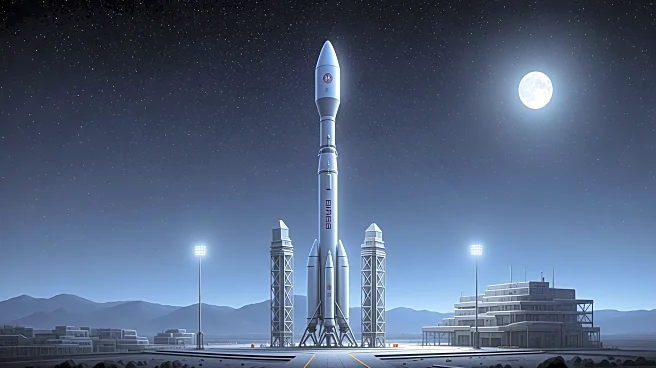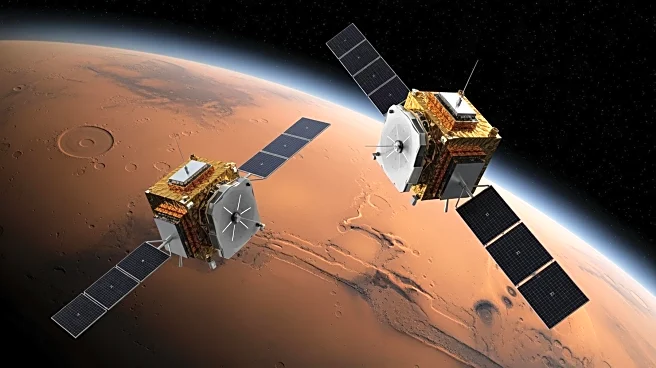What's Happening?
Blue Origin's New Glenn rocket is set to launch a NASA mission to Mars on November 9, 2025. The mission, named ESCAPADE, aims to study Mars' atmosphere and space weather. The two spacecraft, Blue and Gold,
will travel to the Earth-Sun Lagrange Point 2 before heading to Mars, where they will map the planet's magnetic fields, ionosphere, and upper atmosphere in 3D. This mission marks a significant step in Mars exploration, providing insights into the planet's atmospheric loss over billions of years.
Why It's Important?
The ESCAPADE mission is crucial for understanding Mars' atmospheric history, which is essential for future exploration and potential human settlement. By studying the atmosphere's composition and evolution, scientists can better assess Mars' habitability. The mission also highlights the capabilities of Blue Origin's New Glenn rocket, which is designed for heavy-lift operations and features a reusable first stage. This technology could pave the way for more efficient space travel and exploration.
What's Next?
The ESCAPADE mission will spend 12 months studying space weather at L2 before traveling to Mars, where the probes will orbit for seven months to gather data. The findings will inform future Mars missions, particularly those focused on human exploration. Blue Origin's success with the New Glenn rocket may lead to more missions utilizing reusable rockets, enhancing the efficiency and cost-effectiveness of space travel.
Beyond the Headlines
The mission's success could influence future space policy and investment in reusable rocket technology. Understanding Mars' atmospheric loss may also provide insights into planetary climate change, offering lessons applicable to Earth's environmental challenges.












